

By, Abraham Ng’hwani,
Founder – Abranova Real Estate.
If you had $10 million to build your own building, would you hire [our company] to do it for you?” After a brief moment of silence, he looked at me in the eyes and firmly replied, “Never.” At the time, I was a pre-construction engineer working on a $24 million elementary school project. Although it sounded like a construction-related inquiry, I had posed the question to my senior project manager because I was seeking a calling in my career.
My father was a self-trained engineer who bootstrapped his own construction company, among other businesses — without even a high school diploma, let alone a college degree. In his memoir My Life, My Purpose: A Tanzanian President Remembers, the late President Benjamin William Mkapa remarks about Paul Ng’hwani, “He was a prominent and successful businessman…a force to be reckoned with, politically and financially.” 1 Dad’s legacy instilled in me a sense that once I abandon the safety and comforts of my privileged childhood, it would be unbefitting for me to even wear his sandals. They wouldn’t fit anyway — he was a 6’5” giant and I’m barely 5’10”; he grew up with nothing but gave me everything. Most importantly, I feared the fate of becoming another man’s shadow — getting too comfortable and letting his wealth and status define me, abandoning the pursuit of my own destiny. I had to strike out on my own.
So, when my senior manager said “Never”, this only reinforced what I already knew. I immediately incorporated Abranova, a construction development firm that’s laser-focused on optimising innovative efficiencies in creating value for investors.
Through our trusted LPs and GPs, in the last 3 years alone we’ve been involved in projects with an exit potential of $45 million market capitalization. However, we always keep a day one mentality.
Perhaps you’re still wondering, what does this story have anything to do with “How vertically integrated developers in the build-to-rent space have a unique advantage in reaping the most value for their investors?” I’ll explain.
As a full-stack real estate developer, we take on the heavy lifting of construction management instead of the traditional route of hiring a GC or builder. Moreover, we self-perform some of the most critical and volatile trades that can usually make or break the economics of a ground-up deal, namely site-work and concrete. Through the steady hands of our engineering and field team, and a fleet of construction machinery — we’re strategically positioned to execute developments expeditiously in a way that traditional developers can’t. When it comes to build-to-rent developments, the advantage of vertical integration gets even starker.
Any substantial build-to-rent project is almost always going to involve land parcel acquisition; entitling and permitting; land clearing and excavation; grading and installation of underground infrastructure — just to mention a few. Before completing any site acquisition, we must engage landscape and civil engineers to assess the feasibility of a development on that site.
3D modeling software not only help us visualize the topography of the site, but also allow us to estimate the amount of excavation that we should anticipate — hence getting an idea of whether the site-work costs will be manageable before even buying the land.
site-work, a trade that includes most of the items mentioned above, is one of the most volatile because it’s very difficult to estimate and price due to topographical variations, exposure to rains and snow, or simply just challenging soil conditions. To account for this, site-work contractors usually jack up their bids exorbitantly in order to cover their bases. For instance, in our current Nova RTP development — an innovative we-live we-work community in Durham — a site-work contractor would have costed us almost $3 million; the quoted mobilization fees alone were enough to cover our construction equipment costs for a year.
Nova RTP Update Video #17. Abranova is the developer and construction manager on Nova RTP II — a ~$30 million development. The first phase is a 46-townhomes project that’s worth about $17.4 million on the market. The second phase involves the development of 37 units apartments with 5,000 SF of co-working space as well as 10,000 SF of amenities — totaling about 60,000 SF, with a projected exit value of about $13.1 million.
When you also consider the possibility of changing orders, a BTR deal can very quickly go belly up even before the buildings get off the ground.
Not in our case, however. Our dedicated field team and fleet of machinery allows us to take on even the most topographically challenging sites and turn a profit out of them.
While the new construction spending growth is projected to be $18.2 billion in 2021, the demanding work ethics of a construction operation are not for the faint-hearted. Day-in day-out, I’m up at 4 am and before you know it, I’m watching the sunset while still staring at my full calendar for the day. Be it rain, be it snow; be it thunder, be it cold — these acts of God are never a reason for complacency; we’ve got to deliver to our clients and partners, period.
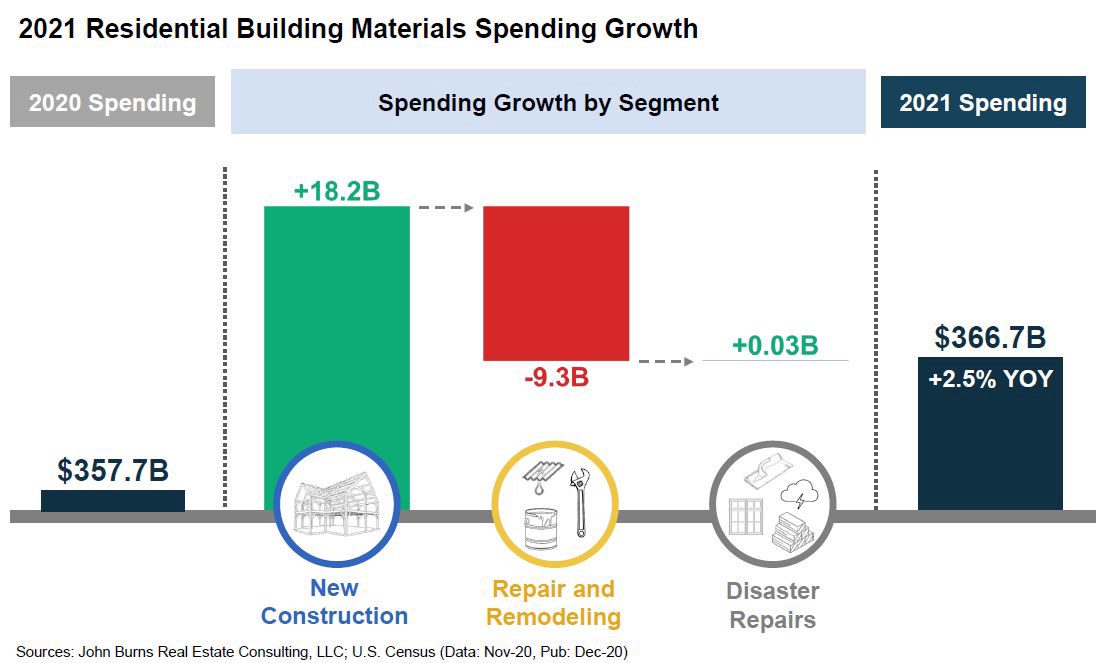
However, with great hardships come great rewards — vertical integration allows us to control the pace of our construction and circumvent obstacles in a way that wouldn’t be possible if we had hired a GC. The big dog homebuilders like Lennar, who experimented with a build-to-rent community in Sparks, Nevada, announced last year that it’s moving further into the space.
“We recently entered an agreement with one of our long-standing third-party relationships to build homes that will be purchased by that third-party in a stand-alone rental community. This community is in Florida and is the first in what we believe will be an ongoing business strategy and relationship where we build and sell homes in bulk on land owned by third parties with no lease-up risk.” Lennar President, Rick Beckwitt. 2
Another advantage of vertical integration is being data driven and nimble enough to act decisively on the market feedback. At Abranova, we constantly track the financials of the largest homebuilders in the nation in order to align our perspectives and understanding of the market; here’s the most interesting observation in the last five years — D.R. Horton builds the most number of homes in the US, while Lennar — second on the line, is the one that reports the most revenue growth. 3
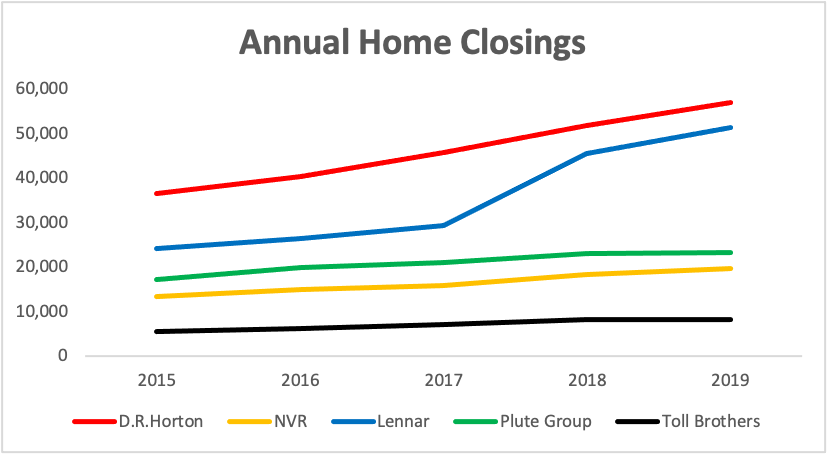
Source: Abranova Real Estate analyzed this data from public sources.

Source: Abranova Real Estate analyzed this data from public sources.
Based on Rick’s ambitions to position Lennar’s competitive advantage in the built-to-rent space, I’m not surprised if this asset class continues to be a significant contributor in it’s future revenues. Just last quarter of 2020, D.R. Horton’s sales grew by 81% while Lennar’s grew by only 16%, however — Lennar reported their highest quarterly margin ever. 3
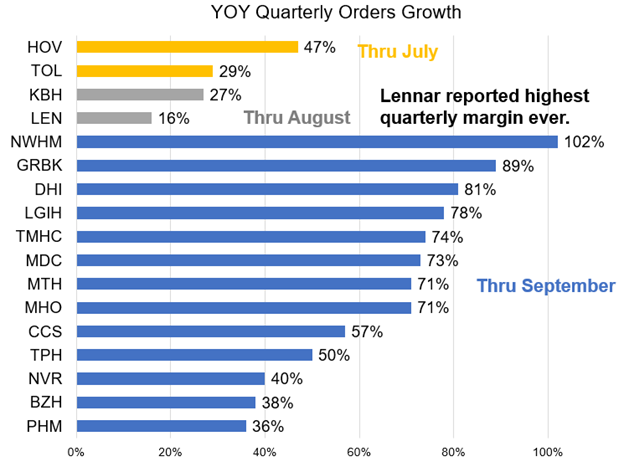
Although Abranova gets involved in the whole nine yards of real estate development, our strategy of what projects we pursue is rather data driven and opportunistic — we’re always going to follow the data. And so far, all the arrows are pointing towards the build-to-rent asset class, followed by apartments and warehouses. This kind of adaptability allows us to always pursue the most profitable ventures at any particular time, helping us create the most value for our investors.
Despite all the above-mentioned benefits of vertical integration, one may ask, “why aren’t all developers vertically integrated?” There’s no straight answer to this question. Successful integration requires a command of engineering, construction management and understanding of the trades that most developers don’t necessarily have. One has to have the appetite for dicing through the minutiae of construction design and blueprints, negotiating bids with subcontractors, and working in a construction site day-in day-out. Moreover, a profit can still be made by outsourcing the construction to a general contracting firm, so why take the management risk and headache? Well, as far as Abranova is concerned — construction is not risky if you’re an expert in the field, and any inherent risk there may be is manageable just like anything else. And headache? Oh please, that’s what we have for breakfast — our mission is to leverage all our construction, engineering and finance expertise in order to create the most optimal value for our investors.

How Vertically Integrated Developers Stand to Make the Most Profits in the Built-to-Rent Space.
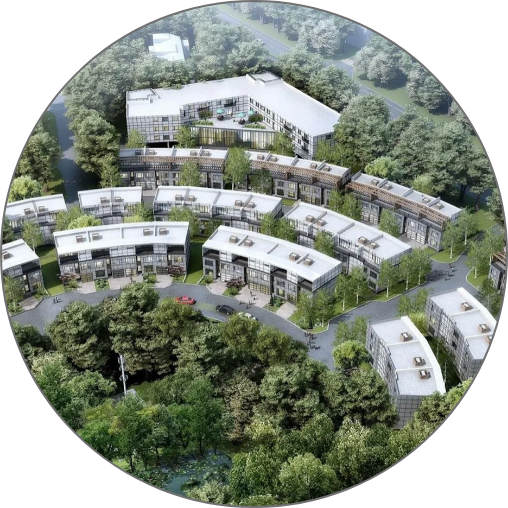
First units set to open at upscale community by Research Triangle Park (Gallery)
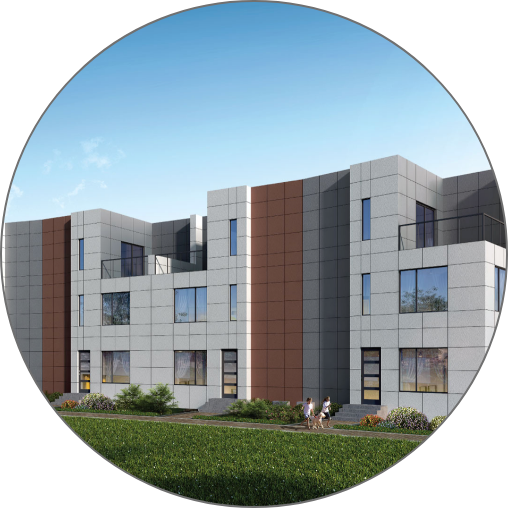
Work set to begin on mixed-use project near RTP featuring townhomes, office space
